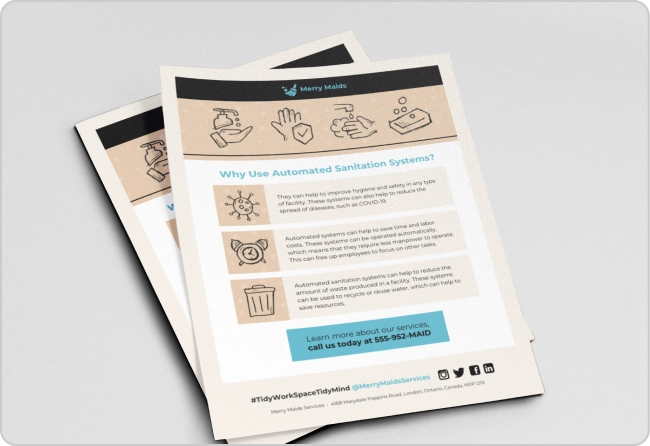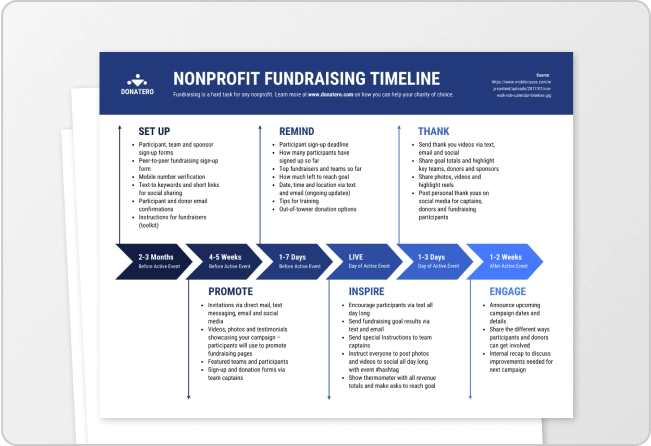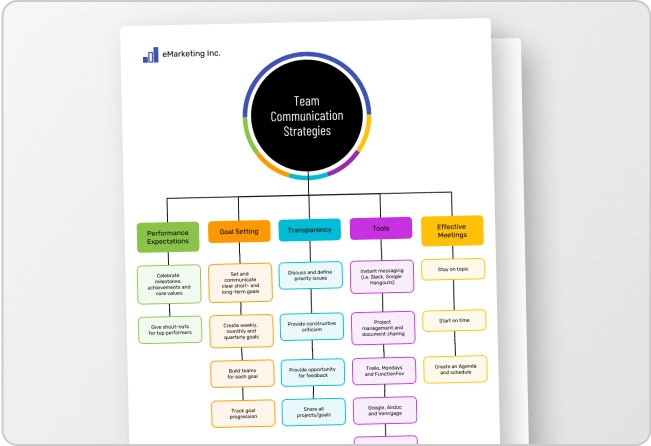
Feeling stuck in a business rut? To stay ahead of the game, companies need to constantly evolve, adapt and improve if they want to stay competitive.
But how do you identify areas for improvement and ensure your processes are running at peak efficiency? That’s where business analysts come in. Ask any experienced analyst and they’ll emphasize the crucial role of process flowcharts.
Business analysts use process flowcharts to map out every step of a process, giving them a clear view of where things might be slowing down or could be done more efficiently.
These visual diagrams are not just about seeing the process—they’re about finding opportunities to optimize. In this article, I’ll show you how to create process flowcharts that’ll boost your business efficiency with the help of our process flowchart templates. Let’s work smarter, not harder.
Click to jump ahead:
- What is a process flowchart
- Benefits of process flowchart
- 5 steps in creating effective process flowcharts
- Optimizing processes with flowcharts
- 8 Industry-specific flowchart examples to improve efficiency
- Unlocking efficiency with process flowcharts
What is a process flowchart?
A process flowchart is a visual representation that outlines the sequence of steps, decisions and activities involved in completing a particular process. It uses standardized symbols, such as arrows, rectangles, diamonds and circles, to illustrate the flow of tasks from start to finish.
Each symbol represents a different aspect of the process:
- Rectangles denote specific tasks or activities.
- Diamonds represent decision points where a yes/no question or choice is made.
- Arrows show the direction of flow from one step to the next.
- Circles often indicate the start or end of the process.
Still can’t picture what flowchart looks like? Check out this example:

Process flowcharts are used in various fields, including business, engineering and project management to help teams understand, document and optimize workflows. They make it easier to identify inefficiencies, potential bottlenecks or areas for improvement within a process.
Not the flowchart you’re looking for? Here’s a guide on the 7 types of flowcharts to help you choose the right one.
Benefits of process flowcharts
Process flowcharts are more than just diagrams—they’re powerful tools that can transform the way you work.
Whether you’re looking to improve communication, make better decisions or boost efficiency, flowcharts offer a clear, visual way to map out processes and identify opportunities for improvement. Here’s how they can benefit your team:
Improved communication and collaboration
Clear communication and collaboration are the backbone of any successful project and process flowcharts serve as a universal language that everyone on the team can understand.
By visually mapping out each step, they make it easier for everyone to see the bigger picture. When everyone knows what’s happening and why, collaboration becomes more natural and ideas flow more freely.
Enhanced decision making
Making decisions is a lot easier when you have a clear roadmap. That’s exactly what process flowcharts are for.
By highlighting key decision points within a process, it allows you to weigh the pros and cons and see how each choice affects the next steps. It’s like having a guide that helps you navigate through complex processes, ensuring you make the best possible decisions.
Increased efficiency and productivity
If there’s one thing everyone can appreciate, it’s finding ways to work smarter, not harder. Process flowcharts are excellent tools for boosting efficiency and productivity.
By breaking down a process into individual steps, you can spot any bottlenecks or repetitive tasks that are slowing things down. Once you know where the inefficiencies are, you can streamline the process, cut out the waste and keep things moving smoothly.
The result? A more efficient workflow that saves time (Voilà!).
Improved accountability and transparency
Accountability is key to getting things done right and flowcharts make it clear who’s responsible for what. By mapping out each step and assigning roles, they ensure everyone knows what’s expected of them.
This clarity not only helps keep the process on track but also ensures that there’s no finger-pointing when things go wrong (which is crucial for achieving the best results).
Enhanced customer satisfaction
At the end of the day, all these improvements lead to happier customers. When your processes are streamlined, communication is clear and decisions are made efficiently, it reflects in the quality of your products or services.
Customers notice when things run smoothly—they get their products faster, with fewer issues and they appreciate the overall experience more.
Satisfied customers are also more likely to come back and recommend your business to others, making process flowcharts a win-win for everyone!
Streamlining cross-departmental workflows? Create a cross-functional flowchart that clearly illustrates how tasks and information are shared between teams. This way, it can help identify areas for improvement and enhance collaboration.
5 steps in creating effective process flowcharts
Creating an effective flowchart is all about being thoughtful and detailed. Here’s a straightforward approach to making sure your process flowcharts are clear, accurate and most importantly — useful:
Step 1: Identify the process to be mapped
First off, look for processes that are crucial to your operations or areas where things often get bogged down. These are the places where a well-crafted flowchart can really make a difference. Picking the right process ensures that your flowchart will have a meaningful impact.
Step 2: Gather input from stakeholders
Involving the right people is crucial so don’t go it alone — get input from the people who know the process best. This could be anyone directly involved in such as team members, managers, vendors and supplies or even customers.
Stakeholders, those directly involved in or affected by the process can provide insights that you might overlook. Getting them involved not only ensures that your flowchart captures the full picture but also helps get everyone on board with any changes that might come out of it.
Step 3: Break down the process into steps
Once you’ve got your input from the key players, it’s time to break things down. Start by outlining the big steps, then zoom in on the smaller tasks within each one.
Always remember — the goal is to create a clear, step-by-step guide that makes it easy to understand and improve the process.
Step 4: Use standard flowchart symbols
Using standard flowchart symbols is a must for clarity and consistency. Stick to the basics—rectangles for tasks, diamonds for decisions and arrows to show the flow.
Keeping it simple with standard symbols ensures that your flowchart is easy to follow, even for someone who wasn’t involved in creating it.
Here’s a breakdown of some common symbols and their uses:
Basic flow symbols
- Terminal: Represents the start or end of a process. Often depicted as an oval shape.
- Process: Represents a step or activity within the process. Typically shown as a rectangle.
- Decision: Represents a point in the process where a choice is made. Usually depicted as a diamond shape.
Flow connectors
- Arrow: Indicates the direction of flow between symbols.
- Connector: Used to connect flowlines that are interrupted or cross each other.
Data symbols
- Input/Output: Represents data entering or leaving the process. Often shown as a parallelogram.
Additional symbols
- Annotation: Used to add comments or notes to the flowchart. Typically shown as a cloud or a rectangle with a dashed line.
- Predefined process: Represents a process that is defined elsewhere. Often shown as a rectangle with a double line.
- Delay: Represents a delay or wait time in the process. Often shown as a hexagon.
Step 5: Review and validate the flowchart
Before you call it done, take the time to review and validate your flowchart. Share it with stakeholders to get their feedback and make sure everything is accurate and complete.
Double-check that we’ve got everything covered. Does the order of steps make sense and does the flowchart really capture the whole process? This final check can help you catch any mistakes and ensure your flowchart is ready to be put into action.
Optimizing processes with flowcharts
Flowcharts aren’t just for mapping out your business processes—they’re your go-to tool for making them better.
By giving you a clear visual overview, flowcharts help you spot areas where things can be improved. Here’s how to use them to improve business efficiency:
Identify bottlenecks
The first step in optimizing any process in your business is finding the bottlenecks—those points where things slow down or get stuck.
Flowcharts make it easy to see these trouble spots by laying out each step visually. Look for steps that always seem to drag, require too many approvals or get bogged down in handoffs.
Once you spot a bottleneck, you can take action, whether it’s reallocating resources, simplifying tasks or automating parts of the process to keep things moving.
Streamline processes
Flowcharts are great for trimming the fat from your business processes. When you break down each step, it’s easier to see which ones are redundant or unnecessary.
By simplifying or eliminating these steps, you can streamline the process, cut down on waste and speed things up. This way, every part of the process serves a clear purpose (work faster, not harder, right?).
Improve decision making
Flowcharts can also sharpen your decision-making. By mapping out where decisions need to be made, you can see all the options and their potential impacts to your business at a glance.
This makes it easier to weigh your choices and make more informed business decisions. Plus, having a clear decision path helps standardize how decisions are made, reducing the chance of mistakes.
Enhance collaboration
When everyone’s on the same page, collaboration just works better. Flowcharts give your team a shared visual reference, making it easier to understand the process and work together, especially for bigger teams.
With everyone seeing the same process laid out, there’s less room for misunderstandings (we all know how that ended the last time).
It also opens the door for team members to suggest improvements, knowing exactly how their ideas fit into the bigger picture. This shared understanding leads to stronger collaboration and better results.
8 Industry-specific flowchart examples to improve efficiency
When it comes to improving efficiency, there’s no one-size-fits-all solution. Every industry has its own unique processes, challenges and goals.
Let’s explore eight industry-specific flowchart templates designed to help improve efficiency and keep your business moving forward.
Human resource process flowchart template
When creating HR process flowcharts, it’s crucial to get everyone on the same page. Work with key players from different departments to make sure the flowchart reflects their unique perspectives.
A helpful tip is to clearly label which departments own specific tasks and decision points. This hiring process flowchart template is a great example of this in action.

Sales process flowchart template
Imagine your sales team as a well-oiled machine. To keep it running smoothly, you need a blueprint. That’s where process flowcharts come in.
Consider breaking down your sales process into stages and clearly outline the tasks required for each one on your flowchart like this:

UX process flowchart template
For UX designers, mapping out the user’s path can help them easily pinpoint areas where users might encounter friction or confusion. This helps address potential issues before they impact the overall user experience.
For example, this user flowchart provides a clear overview of the steps involved in creating an account or logging in, allowing designers to address these issues and improve the overall experience.

Customer success process flowchart template
Process flowcharts aren’t just great for optimizing workflows, they’re also invaluable for training new employees, including client success managers.
For customer success teams, having a process flowchart can help new team members quickly learn the customer success process, reducing onboarding time and improving productivity. Like the idea? Here’s a customer service helpdesk process flowchart that you can use to create one for your team:

Project management process flowchart template
For project teams, providing a shared understanding of the project’s workflow with a flowchart like the one below can facilitate better communication and collaboration among team members.

You can even use time-based symbols or annotations to represent deadlines and dependencies, making it clear which tasks are time-sensitive and which ones are dependent on the completion of others.
Marketing process flowchart template
Need a roadmap for your social media marketing efforts? This process flowchart template can help you plan and execute campaigns that drive engagement and achieve your goals.

By breaking down the process into manageable steps, you’ll gain a clear understanding of what’s involved and how to optimize your strategy.
Consider including loops for iterative testing, such as A/B testing or multivariate testing and outline how results should be analyzed and applied to future campaigns. This emphasizes the importance of data-driven decision-making in marketing.
Finance process flowchart template
For finance and account departments, flowcharts provide a clear overview of financial processes, supporting informed decision-making by management.
They can also ensure compliance with relevant regulations and standards like in this Client Account Collection Escalation Process Flowchart:

Recruitment process flowchart template
Flowcharts provide a clear visual representation of the entire assessment and selection process, allowing recruiters to analyze each step and make informed decisions about candidates.
Here’s how it’s done:

A tip for recruiters here is that you can include steps for diversity and inclusion checks, ensuring that the recruitment process promotes fair hiring practices. These steps could involve reviewing job descriptions for bias or ensuring diverse interview panels.
Didn’t find what you were looking for? Explore these 21 business flowchart examples next.
Unlocking efficiency with process flowcharts
I’m sure by now you’ll agree with me that process flowcharts aren’t just simple diagrams—they’re powerful tools that can make a real difference in how efficiently your business runs.
By mapping out every step, pinpointing bottlenecks, streamlining workflows and boosting collaboration, these flowcharts give you a clear path to success. Whether you’re in HR, sales, marketing or any other area, using flowcharts can lead to smoother operations, better decisions and a more productive business overall.
Now that you know the benefits, why not put them into practice? Start incorporating process flowcharts into your daily routines and see how they can help you streamline your work and achieve your goals faster.





































